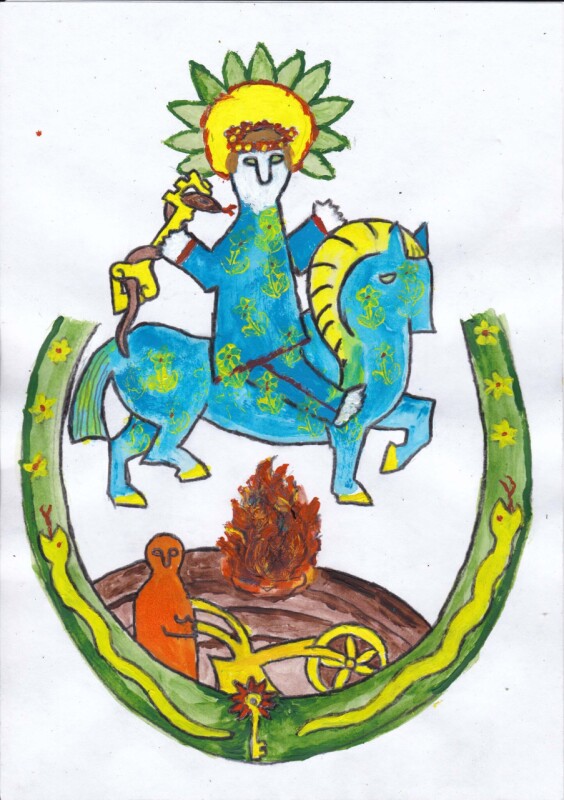MORENA sold the government to VESNA, and so there is a time when it is obvious that everything in nature seems to be reviving, budding and blooming. It was during this period, which began with the spring equinox, that our ancestors celebrated various holidays and performed many ceremonies. These ceremonies were mainly associated with the change of the season and the beginning of agriculture work. Even today we celebrate WATER DAY as well as EARTH DAY.
We can say with satisfaction that these, albeit modern holidays, reflect a deep-rooted human respect for our mother Earth - the goddess MOKOSH as well as water embodied by the goddess LADA. In the past, however, rather than precisely defined days, it was the first half of the spring period, ending with a day called SNAKE DAY, after which agricultural work begins.
This holiday is dedicated to the deity JARILO, who, as the embodiment of the spring sun in the form of a cheerful hero in a white linen robe on a gray horse with bare feet, a wreath of spring wildflowers on his head, unlocks the earth and water with a golden key.
But even before that, as a warrior in shining armor with a copy and a golden shield, he defeats the dark dragon NIJ, whose quest was to plunge our world into eternal darkness. Perhaps thanks to this depiction, St. George took over his function through Christianity.
To this day, there is a tradition that the earth opens up on Juraj and that nothing grows until George, even if you pull it with tongs, you can hammer it with a hammer after George, you cannot prevent growth. In addition to plants, animals such as snakes, lizards and frogs also make their way to the surface. JARILO lends them magical power on this day. That is why this day is called SNAKE DAY.
Many magical ceremonies are associated with this day, or rather period, starting with the emptying of dwellings and stables, hot coals from the Jurassic fire, sprinkled with various herbs, through ceremonial walks around the fields, orchards and actually the entire farm with a request for a good harvest associated with the jingling of keys, until the ceremonial copulation of the husband and wife on the first plowed land. In a later period, this act was replaced by a symbolic wedding of a male figure wearing a mask and a wooden phallus with a woman who simulated pregnancy and childbirth.
However, we can consider the main ceremony of this period to be the first spring plowing, performed with respect to the goddess MOKOSH, during which eggshells were plowed into the ground, or even crumbs from the big (day) night table. Of course, last but not least, with respect to the goddess LADA, ceremonial cleanings of wells, springs and watercourses were also performed. After all, EARTH and WATER used to be sacred to people.
I wish you that the earth and water continue to be sacred for you, that you have enough of all good things, and in return just show respect to MOKOSHA, LADA and JRILO, run out into nature one day and clean some piece of land and piece of water from the garbage that got there out of disrespect man to the holy life.


















